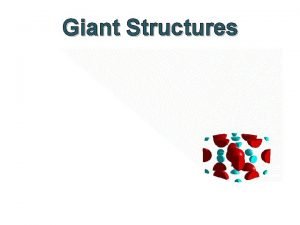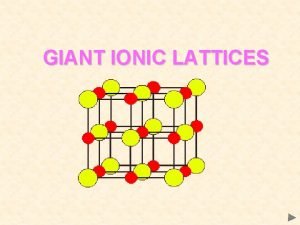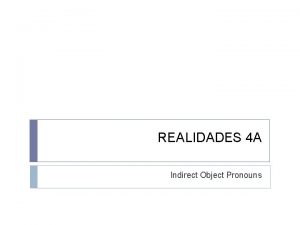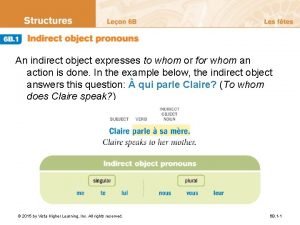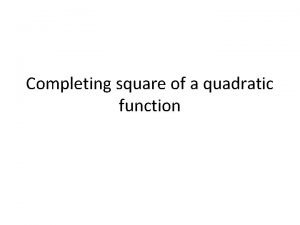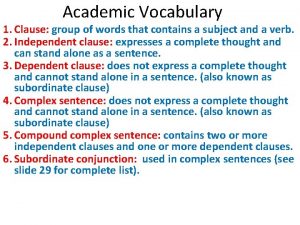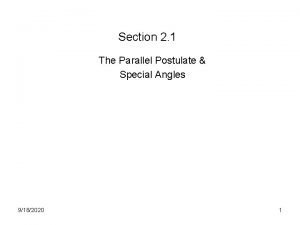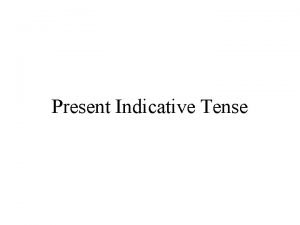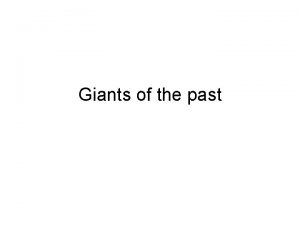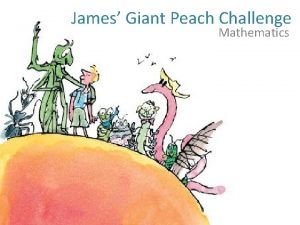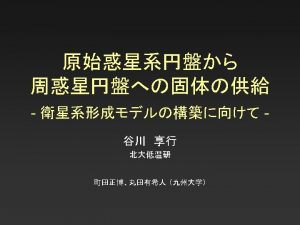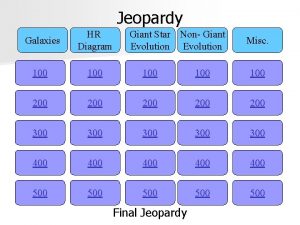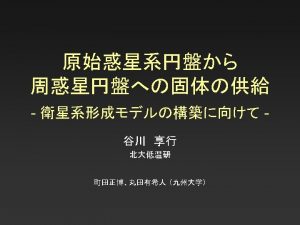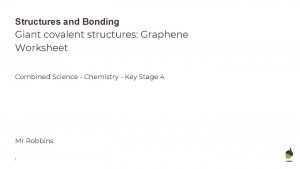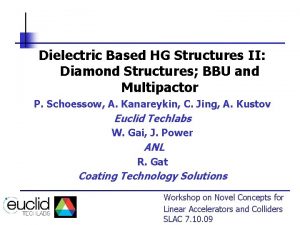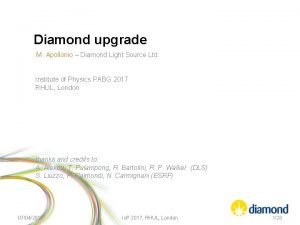Giant Structures continued Diamond Diamond is a form



























- Slides: 27

Giant Structures (continued)

Diamond

Diamond is a form of pure carbon. Each carbon atom has four unpaired electrons in its outer energy level (shell) and it uses these to form four covalent bonds.

Bonding In Diamond In diamond, each carbon bonds strongly to four other carbon atoms. The diagram shows enough of the structure to see what is happening.

Activity: Look at the diagram. Is each carbon atom forming four bonds? In the diagram some carbon atoms only seem to be forming two bonds (or even one bond), but that’s not really the case. The diagram is only showing a small bit of the whole structure.

The Covalent Bonds in Diamond The lines in the diagram each represent a covalent bond.

Diamond is a Giant Covalent Structure This is a giant covalent structure – it continues on and on in three dimensions.

Diamond is not a molecule It is not a molecule, because the number of atoms joined up in a real diamond is completely variable, depending on the size of the crystal. Molecules always contain fixed numbers of atoms joined by covalent bonds.

Activity: Drawing the structure of Diamond Draw the structure of diamond using the stages shown below.

Properties of Diamond

1. Diamond is very hard, with very high melting and boiling points. This is because of the very strong carbon-carbon covalent bonds which extend throughout the whole crystal in three dimensions.

2. Diamond does not conduct electricity. This is because all the electrons in the outer levels of the carbon atoms are tightly held in covalent bonds between the atoms. None are free to move around.

3. Diamond does not dissolve in water or any other solvent. This is again because of the powerful covalent bonds between the carbon atoms. If the diamond dissolved, these would have to be broken.

Graphite

Graphite is also another form of carbon, but the atoms are arranged differently.

Activity: Drawing the structure of Diamond Draw the structure of graphite.

Structure of Graphite has a layer structure rather like a pack of cards. In a pack of cards each card is strong, but the individual cards are easily separated. The same is true in graphite.

Properties of Graphite

1. Graphite is a soft material with a slimy feel. Although the forces holding the atoms together in each layer are very strong, the attractions between the layers are much weaker. Layers can easily be flaked off.

Graphite (mixed with clay to make it harder) is used in pencils. When you write with a pencil you are leaving a trail of graphite layers behind on the paper.

Pure graphite is so slippery that it is used as a dry lubricant – for example, to lubricate locks.

2. Graphite has High Melting and Boiling Points and is Insoluble in any Solvent. To melt or dissolve the graphite, you don’t just have to break the layers apart – you have to break up the whole structure, including the covalent bonds. This needs very large amounts of energy because the bonds are so strong.

3. Graphite is less dense than diamond. This is because the layers in graphite are relatively far apart.

The distance between the graphite layers is more than twice the distance between atoms in each layer. In a sense, a graphite crystal contains a lot of wasted space, which isn’t there in a diamond crystal.

4. Graphite conducts electricity. Look at the diagram of the arrangement of the atoms in each layer in the graphite. Question: How many atoms is each carbon atom joined to? Answer = 3

Each carbon atom uses three of its electrons to form these simple covalent bonds. Question: How many electrons are therefore free? Answer = 1

The fourth electron in the outer layer of each atom is free to move around throughout the whole of the layer. The movement of these electrons allows the graphite to conduct electricity.
 Giant metallic structure examples
Giant metallic structure examples Giant crystal lattice
Giant crystal lattice Biology homology
Biology homology Present continuous interrogative negative
Present continuous interrogative negative Romeo and juliet act ii scene 2
Romeo and juliet act ii scene 2 Romeo and juliet act 4 questions
Romeo and juliet act 4 questions Capítulo 4a indirect object pronouns (continued answers)
Capítulo 4a indirect object pronouns (continued answers) Position cost distribution
Position cost distribution What are signal words
What are signal words Table continued
Table continued Continued abbreviation
Continued abbreviation Continuous
Continuous Demonstrative adjectives continued answers
Demonstrative adjectives continued answers Indirect object pronouns (continued)
Indirect object pronouns (continued) Demonstrative adjectives continued answers
Demonstrative adjectives continued answers Acts 2 42
Acts 2 42 9-7 solving quadratic equations by using square roots
9-7 solving quadratic equations by using square roots 7-4 lesson quiz factoring polynomials
7-4 lesson quiz factoring polynomials Lesson 2-4 completing the square worksheet answers
Lesson 2-4 completing the square worksheet answers Describing energy section 2 answers
Describing energy section 2 answers Section 1 atmospheric basics continued answers
Section 1 atmospheric basics continued answers Completing the square (continued)
Completing the square (continued) Chapter 8 section 3: cellular respiration
Chapter 8 section 3: cellular respiration Juan continued playing although he injured his knee
Juan continued playing although he injured his knee 4-5 completing the square answers
4-5 completing the square answers Completing the square (continued)
Completing the square (continued) Types of special angles
Types of special angles Oy verbs
Oy verbs
